This blog contains affiliate links. As part of afiiliate networks and as an Amazon Associate, I earn from qualifying purchases. If you make a purchase through these links, I may earn a small commission at no additional cost to you. I only recommend products and services that I believe in and have personally used or researched. Your support helps me continue to provide quality content—thank you!
You want to build a strong foundation in wildlife conservation with a curated selection of essential textbooks. Start with ‘Wildlife Ecology, Conservation, and Management’ and ‘The Wildlife Techniques Manual’ for a thorough understanding of research and management techniques. Add ‘Conservation of Wildlife Populations’ for insights into population demographics and genetics. ‘Human Dimensions of Wildlife Management‘ will help you navigate social aspects, while ‘Wildlife Management and Conservation’ covers human dimensions, population dynamics, and animal behavior. Continue with ‘Practical Wildlife Care’ for hands-on guidance and ‘Wildlife Ecology and Management’ for an in-depth introduction to the field. Next, discover more essential texts and factors to weigh when choosing the right ones for your conservation journey.
Key Takeaways
- Choose textbooks that align with your academic background, learning objectives, and field of study in wildlife ecology and management.
- Prioritize textbooks with accurate information, as it directly impacts conservation decisions and wildlife populations.
- Consider the level of difficulty and relevance to real-world scenarios in wildlife ecology, conservation, and management.
- Evaluate the expertise of the author in wildlife biology or a related field to ensure credibility and authority.
- Select textbooks that incorporate the latest research and data to stay current in the field of wildlife conservation.
Wildlife Ecology, Conservation, and Management
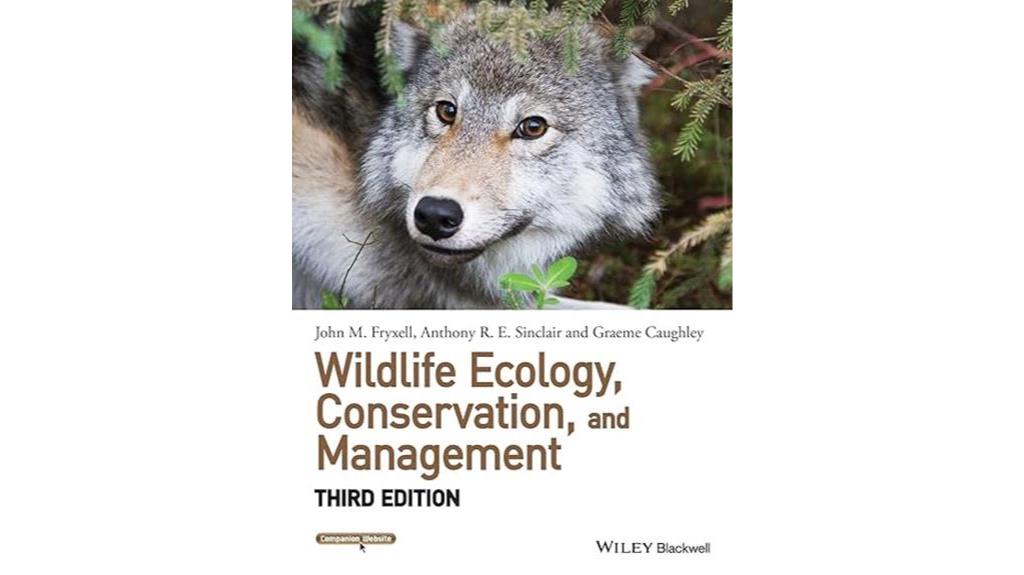
If you’re an ecologist or student seeking a thorough and accessible guide to wildlife ecology, conservation, and management, this textbook stands out as a top choice, praised by experts and learners alike for its clear explanations and ample examples.
You’ll find complex concepts presented in a simplistic and easy-to-understand manner, making it a valuable resource for both beginners and seasoned professionals.
With its wealth of information, you’ll appreciate the in-depth coverage of key topics, although some users note that the lack of visuals, such as photos, might make it harder to grasp certain concepts.
Overall, this textbook is a top pick for those seeking a thorough and user-friendly guide to wildlife ecology, conservation, and management.
Best For: Students and professionals in wildlife ecology, conservation, and management seeking a thorough and accessible guide.
Pros:
- Clear explanations and ample examples make complex concepts easy to understand
- Wealth of information provides in-depth coverage of key topics
- Suitable for both beginners and seasoned professionals
Cons:
- Lack of visuals, such as photos, may make it harder to grasp certain concepts
- Some users find the charts and graphs too small to read
- May be heavy on math, which could be challenging for some users
The Wildlife Techniques Manual
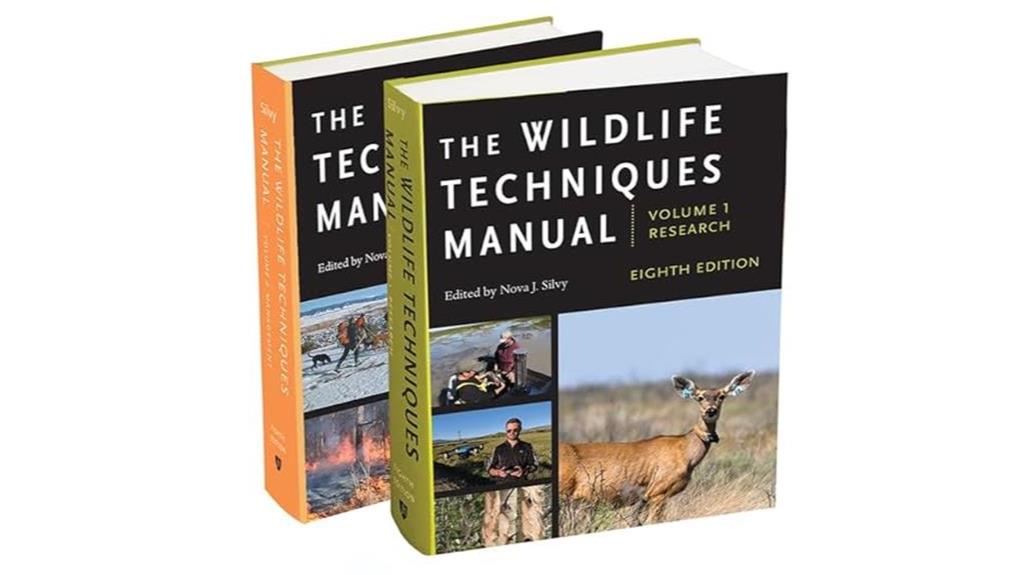
As a wildlife professional, you’ll find the Wildlife Techniques Manual to be an indispensable resource, offering a thorough, two-volume set that covers research and management techniques, making it an ideal choice for those seeking a reliable guide for conservation and management efforts.
This exhaustive manual is essential for wildlife managers, providing an outstanding resource for the conservation and management community.
The 2020 edition has been updated with recent studies and methods, making it an excellent reference for wildlife biologists and professionals.
With a 5-star rating and positive reviews, you can trust that this manual will be a valuable addition to your library.
Whether you’re working with state and government agencies or using it for educational purposes, the Wildlife Techniques Manual is a must-have for any conservationist.
Best For: Wildlife managers, wildlife biologists, professionals, conservationists, and students working with state and government agencies or using it for educational purposes.
Pros:
- Comprehensive and exhaustive two-volume set covering research and management techniques
- Updated 2020 edition with recent studies and methods
- Excellent reference for wildlife biologists and professionals with a 5-star rating
Cons:
- One 1-star rating with no feedback (but unclear what the issue was)
- No other negative reviews or feedback provided
- None mentioned
Conservation of Wildlife Populations: Demography, Genetics, and Management
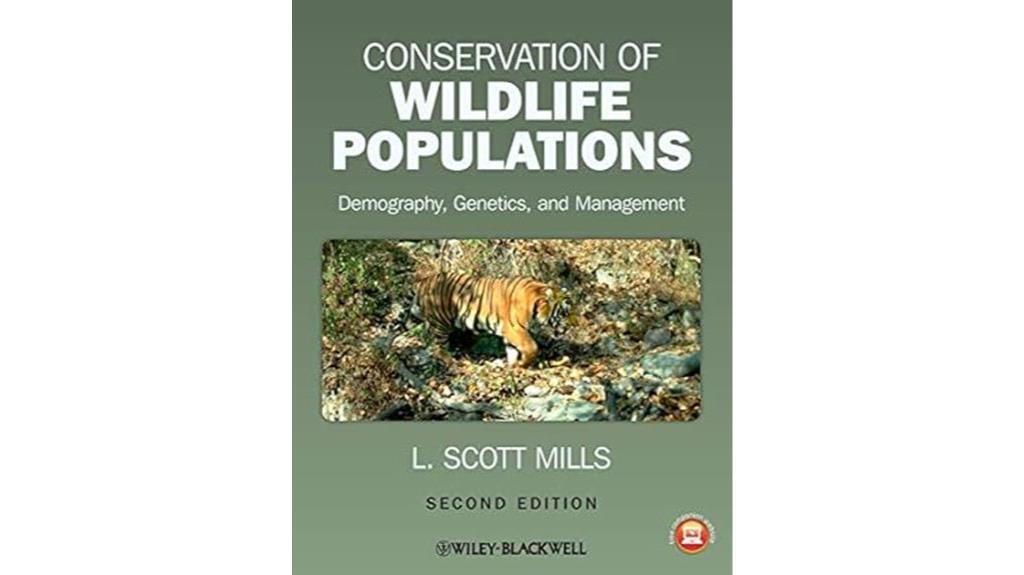
For students seeking a thorough guide to estimating wildlife populations, this textbook stands out for its clear explanations of current techniques and mathematical models, making it an ideal choice for those looking to grasp the fundamentals of conservation biology.
You’ll appreciate how it breaks down complex concepts into understandable language, covering essential topics like population dynamics and demographics.
The authors provide an in-depth overview of threats to wildlife populations and offer practical solutions to combat them.
Although some readers may find certain sections challenging, requiring review, the payoff is worth the effort.
With its clear explanations and thorough coverage of estimating demographics, this textbook is a valuable resource for anyone serious about conservation.
Best For: Students and professionals seeking a comprehensive guide to estimating wildlife populations and understanding the fundamentals of conservation biology.
Pros:
- Provides clear explanations of current techniques and mathematical models for estimating wildlife populations
- Covers essential topics like population dynamics and demographics, making it an ideal choice for those looking to grasp the fundamentals of conservation biology
- Offers practical solutions to combat threats to wildlife populations, making it a valuable resource for conservation efforts
Cons:
- Certain sections can be challenging to read and may require review
- Requires a basic understanding of statistics to fully comprehend the book
- May not be suitable for beginners or those without a background in conservation biology
Human Dimensions of Wildlife Management
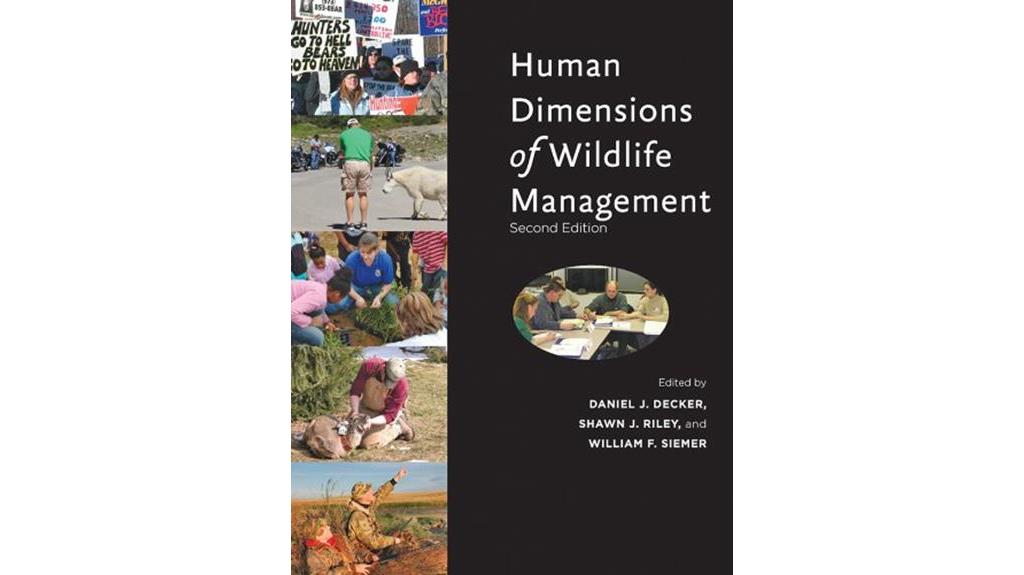
Wildlife professionals and students seeking to effectively manage human-wildlife conflicts will find ‘Human Dimensions of Wildlife Management‘ an invaluable resource, providing them with the necessary tools to navigate complex social dynamics.
You’ll gain valuable insights into dealing with people in wildlife management, and this book will become an essential companion in your academic and professional pursuits.
Many students have found this book to be an interesting and informative read, even when it’s required for a class.
While some have reported issues with the eBook format, the physical book has been a lifesaver for those who need it for their coursework.
Overall, ‘Human Dimensions of Wildlife Management’ is a must-have for anyone looking to make a positive impact in the field of wildlife conservation.
Best For: Wildlife professionals, students, and individuals seeking to effectively manage human-wildlife conflicts and make a positive impact in the field of wildlife conservation.
Pros:
- Provides valuable insights into dealing with people in wildlife management
- An essential companion for academic and professional pursuits
- A must-have for anyone looking to make a positive impact in the field of wildlife conservation
Cons:
- Issues with eBook format, including difficulty highlighting and app crashes
- Some users found the content to be dense
- Physical book may be necessary for coursework, adding extra cost
Wildlife Management and Conservation: Contemporary Principles and Practices
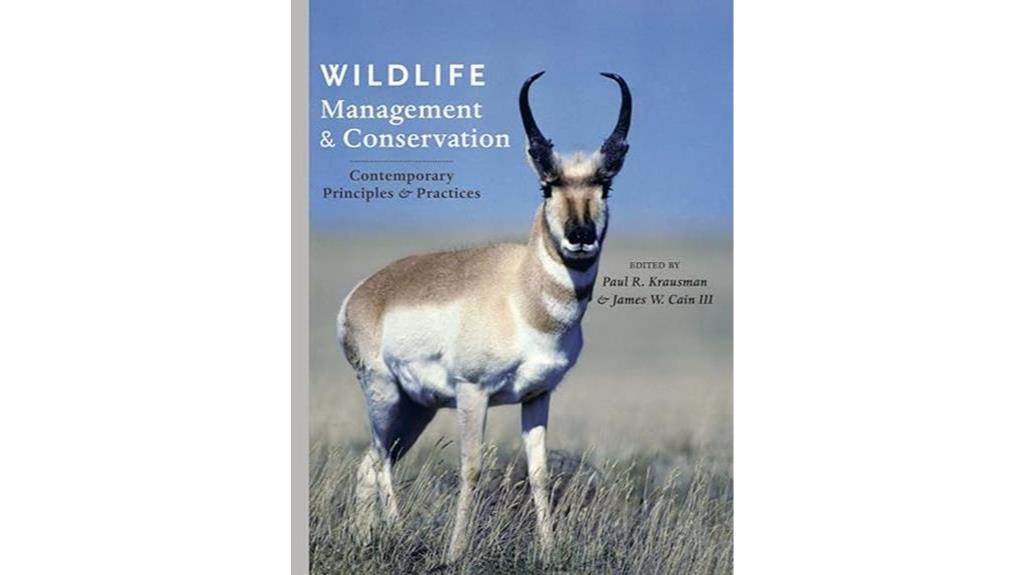
If you’re an undergraduate student or instructor seeking a thorough and easy-to-follow textbook for a wildlife management class, ‘Wildlife Management and Conservation: Contemporary Principles and Practices‘ is an excellent choice, offering a perfect upgrade to older materials.
This textbook covers a broad range of topics, including human dimensions, population dynamics, nutrition, water, predator/prey interactions, habitat, and animal behavior.
The chapters, written by leaders in the field, are well-written and easy to understand. Although the book lacks a clear narrative throughout, individual chapters are informative and engaging.
You’ll appreciate the structured decision-making chapter, which adds significant value to the text.
Overall, this textbook has received overwhelmingly positive responses from students and is suitable for an undergraduate wildlife management class.
Best For: Undergraduate students and instructors seeking a thorough and easy-to-follow textbook for a wildlife management class.
Pros:
- Covers a broad range of topics, including human dimensions, population dynamics, nutrition, water, predator/prey interactions, habitat, and animal behavior.
- Chapters are well-written and easy to understand, making it a great resource for students.
- Includes a valuable structured decision-making chapter that adds significant value to the text.
Cons:
- Lacks a clear narrative throughout, with individual chapters feeling disconnected.
- Focuses only on North American management approaches, lacking comparisons to other countries.
- May be more useful as a reference book than a textbook due to the lack of cohesion between chapters.
Wildlife of the World
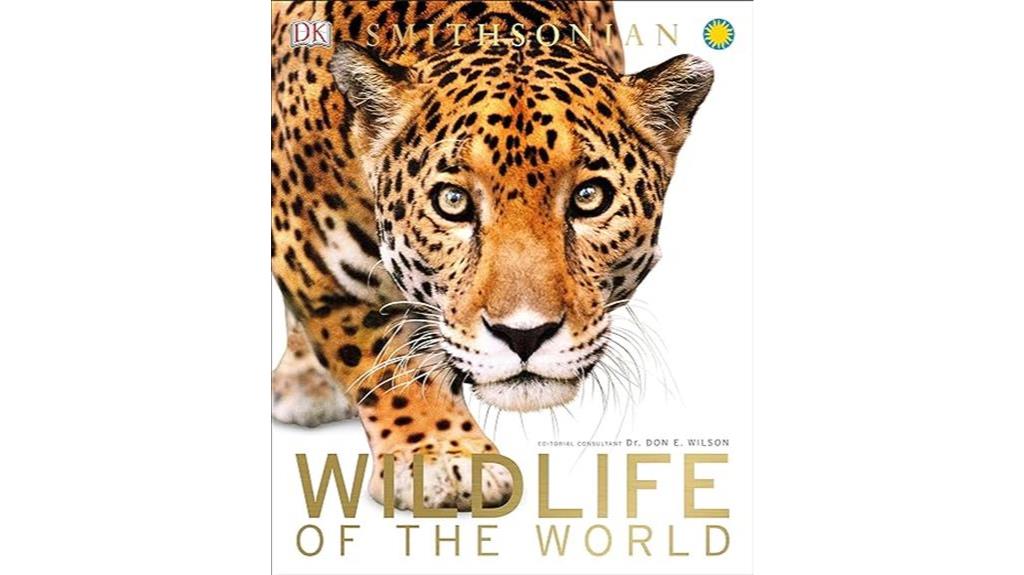
You’ll find the ‘Wildlife of the World‘ textbook to be an ideal choice when seeking a beautifully illustrated and informative guide, perfect for curious kids and nature lovers alike.
The stunning photographs will captivate you, showcasing animals in their natural habitats.
You’ll love the detailed information about various species, including mammals, amphibians, and more.
This book is perfect for home libraries or as a coffee table display, making it an excellent addition to any nature enthusiast’s collection.
It’s also a great gift option for kids and adults alike, fostering a love for wildlife and conservation.
With its beautiful illustrations and concise information, ‘Wildlife of the World’ is sure to delight readers of all ages.
Best For: This book is ideal for nature lovers, curious kids, and anyone seeking a beautifully illustrated and informative guide to the world’s wildlife.
Pros:
- Beautifully illustrated with stunning photographs showcasing animals in their natural habitats
- Provides detailed information about various species, including mammals, amphibians, and more
- Makes a great addition to home libraries or as a coffee table display, and also serves as an excellent gift option for kids and adults alike
Cons:
- No cons mentioned in the reviews.
Zoology: Inside the Secret World of Animals (DK Secret World Encyclopedias)
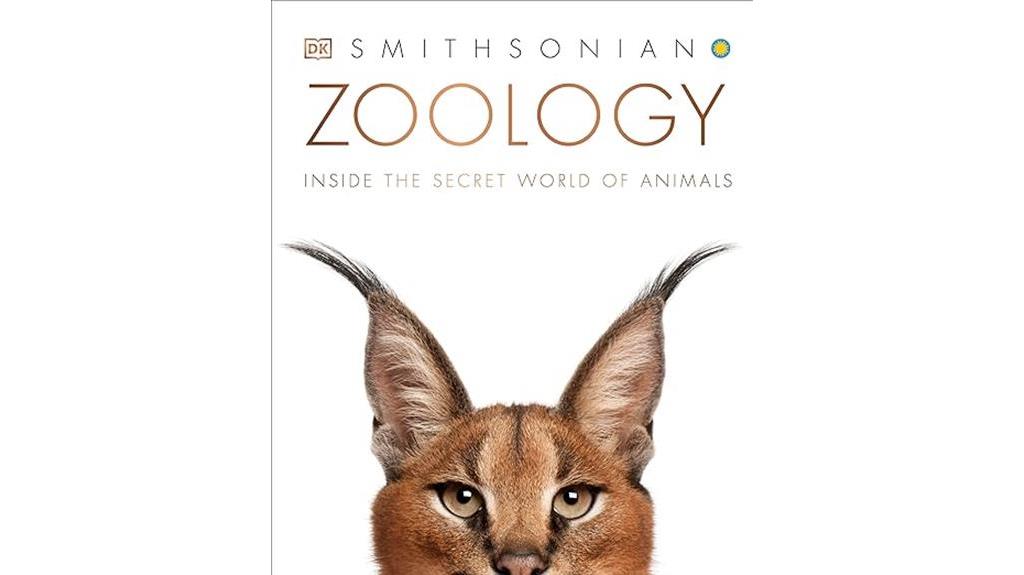
With its breathtaking photography and engaging facts, this book is an ideal choice for curious kids and parents alike who want to explore the fascinating world of animals.
You’ll be impressed by the stunning visuals and interesting facts that make this book a keepsake for years to come.
Many readers have praised the book’s design and information, making it an excellent gift for kids who love animals.
You’ll find it’s an excellent resource for learning about various animals, with plenty of pictures and fun facts that will keep you and your little ones engaged.
With its high-quality content, this book is definitely a great addition to any home library or classroom.
Best For: animal-loving kids and parents who want to explore the fascinating world of animals together.
Pros:
- Breathtaking photography and engaging facts make this book a keepsake for years to come.
- Excellent resource for learning about various animals, with plenty of pictures and fun facts.
- High-quality content makes it a great addition to any home library or classroom.
Cons:
- Some customers received books with condition and quality issues, such as bent or damaged covers.
- Binding quality can be poor, causing pages to tear or covers to separate.
- Some orders may arrive in less-than-perfect condition, such as with bent corners or other damage.
Practical Wildlife Care
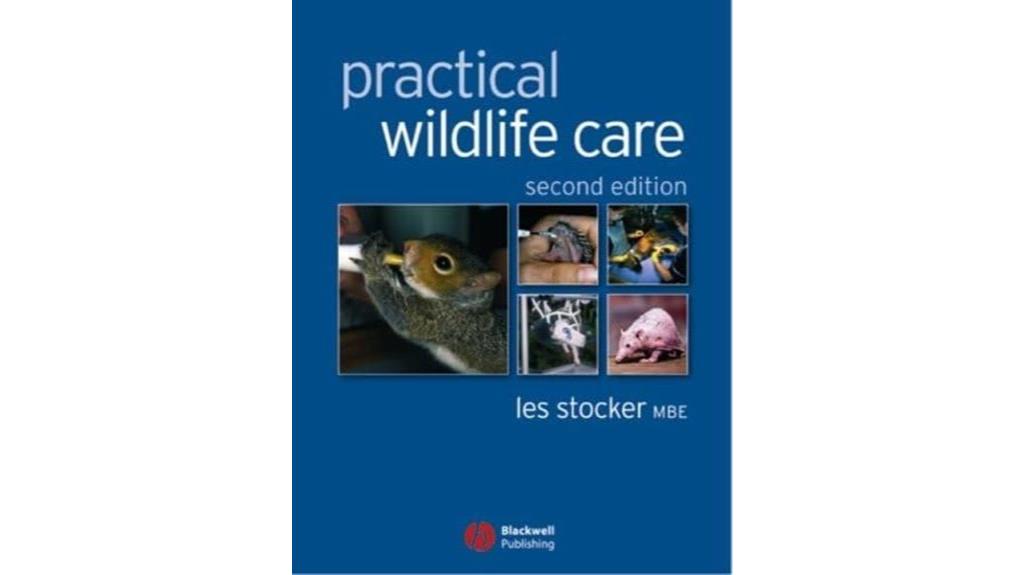
This practical guide is the best choice for certified caretakers and interns seeking a thorough resource for hands-on wildlife care and rehabilitation.
As you enter the world of wildlife care, you’ll appreciate the book’s clear explanations and detailed procedural information.
The photos and descriptions will help you identify and treat medical issues in the creatures you’re caring for.
You’ll find it’s a valuable resource for recognizing and treating common injuries and illnesses in British wildlife, including badgers, hedgehogs, and birds.
Although it’s specifically geared towards UK wildlife and laws, the information is still highly applicable for anyone training for a career in animal rescue.
You might wish for more photos, but overall, it’s an excellent addition to any wildlife rehabilitator’s library.
Best For: Certified caretakers, interns, and those training for a career in animal rescue seeking a thorough resource for hands-on wildlife care and rehabilitation.
Pros:
- Provides clear explanations and detailed procedural information for hands-on wildlife care and rehabilitation
- Includes great photos and descriptions to help identify and treat medical issues in various creatures
- An excellent addition to any wildlife rehabilitator’s library, with highly applicable information for those training in animal rescue
Cons:
- Limited geographic scope, specifically geared towards UK wildlife and laws
- May not be suitable for those caring for North American wildlife
- Some users may wish for more photos and diagrams
Wildlife Ecology and Management
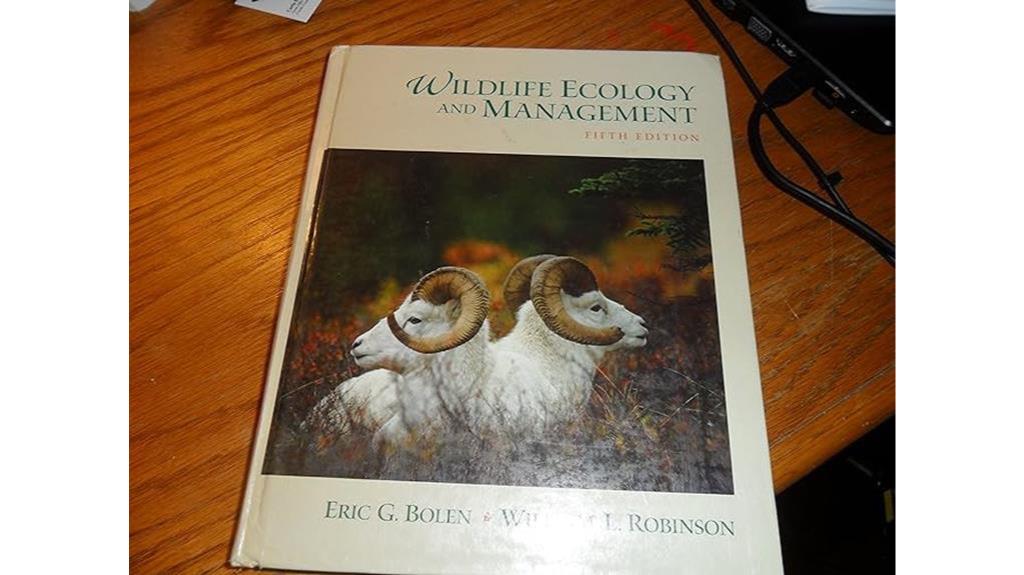
If you’re a college student seeking an in-depth introduction to the multifaceted world of wildlife management, Wildlife Ecology and Management textbooks are an excellent choice.
You’ll appreciate the thorough overview of the various aspects of wildlife management, which will give you a deeper understanding of the complexities involved.
While some reviewers have mentioned issues with the book’s condition and quality, many have found it to be a valuable resource for their college courses.
You’ll likely find the material engaging, and the examples provided will help illustrate key concepts.
As you venture into the world of wildlife management, you’ll gain a new appreciation for the challenges and benefits of balancing human and wildlife needs.
With this textbook, you’ll be well on your way to achieving academic success and developing a deeper understanding of this critical field.
Best For: College students seeking an in-depth introduction to the multifaceted world of wildlife management.
Pros:
- Provides a thorough overview of the various aspects of wildlife management
- Engaging material with examples that help illustrate key concepts
- Valuable resource for college courses, helping students achieve academic success
Cons:
- Some reviewers have reported issues with the book’s condition and quality
- Pages may fall out due to poor binding, and printer errors may occur
- Some students may find the examples excessive and not conducive to learning
Introduction to Wildlife Management: The Basics
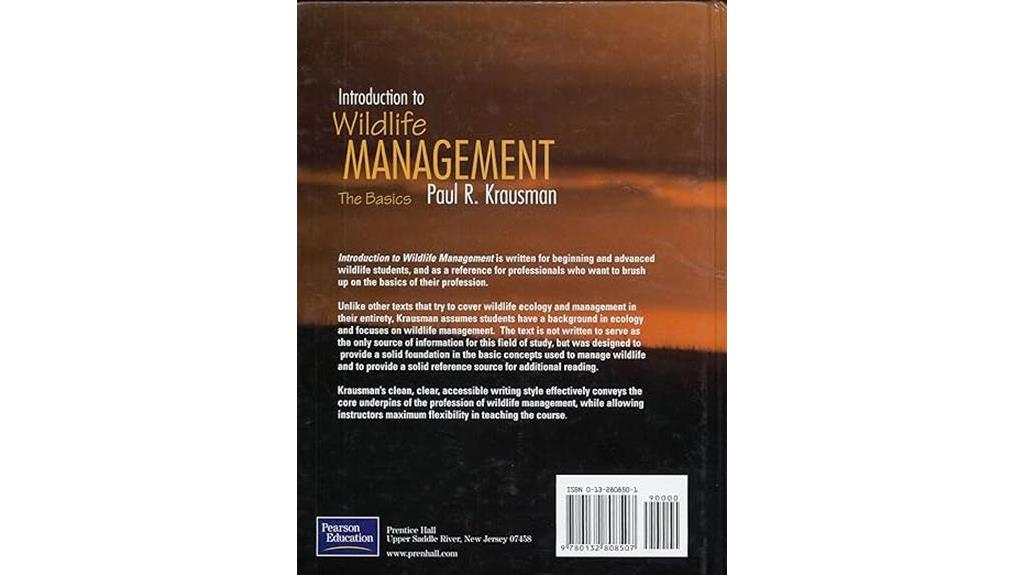
As a student or professional in the wildlife management field, you’ll find that ‘Introduction to Wildlife Management: The Basics’ is an excellent textbook choice, particularly if you’re looking for a thorough and easy-to-read primer that covers the fundamentals.
This book is well-organized, easy to read, and provides insightful content that covers the basics of wildlife management.
While it may not offer new ideas or mention adaptive management, it’s a reliable resource that you’ll use often throughout your career.
In fact, many students buy this book for a wildlife course and continue to reference it long after.
Plus, the hardcover edition is a worthwhile investment due to durability concerns with the softcover version.
With fast shipping, you can get started with this essential textbook right away.
Best For: Students and professionals in the wildlife management field looking for a thorough and easy-to-read primer on the fundamentals of wildlife management.
Pros:
- Covers the basics of wildlife management in an easy-to-read style
- Well-organized and provides insightful content
- Fast shipping and durable hardcover edition available
Cons:
- Doesn’t offer many new ideas
- Doesn’t mention adaptive management
- Softcover edition has durability issues
Factors to Consider When Choosing Wildlife Textbooks
When selecting a wildlife textbook, you’ll want to verify several key factors to guarantee you’re getting the right one for your needs.
You’ll need to ponder what your course requires, whether the information is accurate and up-to-date, and how relevant it’s to your field of study.
Additionally, you’ll want to ponder the level of difficulty, as well as the expertise of the author.
Course Requirements
You’ll need to guarantee that the wildlife textbook you choose aligns with the specific requirements of your course, which involves verifying the level of difficulty, content coverage, and learning objectives. This confirms that the textbook meets the instructor’s expectations and helps you achieve the course’s learning outcomes.
Verify that the textbook is the required or recommended text for the course, as specified by the instructor or course syllabus.
Also, consider the textbook’s relevance to the course curriculum and learning outcomes. Check if the textbook covers key topics, concepts, and skills outlined in the course syllabus.
Instructors may also specify a particular edition or version of the textbook, which you should verify before making a purchase.
Additionally, check if the textbook is available in various formats, such as e-book, rental, or used copies, to accommodate different learning styles and budgets.
Accurate Information
Accurate information is paramount in wildlife textbooks, as it directly impacts the reliability of conservation decisions and the well-being of wildlife populations.
When choosing a textbook, you’ll want to verify that the information presented is trustworthy and reliable. Look for textbooks written by experts in the field who’ve a deep understanding of the subject matter. They should clearly distinguish between facts and opinions, and avoid presenting speculation or anecdotes as factual information.
Inaccurate information can have devastating consequences for conservation efforts, so it’s vital that textbooks undergo rigorous peer-review and editing processes to catch errors and inconsistencies before publication.
As a conservationist, you need to be confident that the information you’re using to inform your decisions is accurate and up-to-date. By choosing a textbook that prioritizes accurate information, you’ll be better equipped to make informed decisions that benefit wildlife populations and ecosystems.
Relevance to Field
As you select a wildlife textbook, consider whether the content aligns with real-world scenarios in wildlife ecology, conservation, and management, verifying it provides practical knowledge and skills for the field.
You want a textbook that focuses on practical applications and case studies, helping you develop problem-solving skills and preparing you for a career in wildlife management.
The textbook should cover a range of topics, including population ecology, habitat management, human-wildlife conflict, and conservation biology, to provide a thorough understanding of the field.
It’s essential to choose a textbook written by authors with expertise in wildlife ecology and management, guaranteeing the information is accurate and up-to-date.
The textbook should also include examples and case studies from different regions and ecosystems, providing a global perspective on wildlife management and conservation.
Level of Difficulty
When selecting a wildlife textbook, consider the level of difficulty, ensuring it aligns with your academic background and learning objectives, and adjust your choice accordingly.
You don’t want to struggle through a textbook that’s too advanced or, on the other hand, find one that’s too simplistic.
Assess your current knowledge and skills in the field and choose a textbook that bridges the gap between what you know and what you need to learn.
If you’re a beginner, look for textbooks with clear explanations, examples, and illustrations that help you grasp fundamental concepts.
If you’re more advanced, you might prefer textbooks that explore deeper into specialized topics or present cutting-edge research.
Be honest about your learning style and pace, too.
Do you prefer textbooks with concise, bite-sized chapters or more in-depth, detailed discussions?
Author Expertise
Evaluate the author’s expertise in wildlife biology or a related field, as their academic background and research experience substantially impact the textbook’s credibility and reliability. You want to verify the author has a strong foundation in the subject matter.
Check if they’ve a degree in wildlife biology, ecology, or a related field. Have they conducted research or published papers on the specific topics covered in the textbook? This indicates their expertise in those areas. Also, look for authors affiliated with reputable institutions or organizations, such as universities, government agencies, or non-profit organizations, which can lend credibility to their work.
Additionally, consider authors with practical experience in wildlife management, such as working with government agencies or conservation organizations. They can provide valuable insights and real-world examples.
Furthermore, check if the author has received awards or recognition for their work in the field of wildlife biology or management. This indicates their reputation and expertise.
Visual Aids Quality
You’ll want to examine the quality of visual aids in a wildlife textbook, as high-quality images, diagrams, and illustrations can substantially enhance your understanding of complex wildlife management concepts.
These visual aids can help you better comprehend ecological relationships and conservation principles by providing detailed and accurate illustrations of animal anatomy, habitat diagrams, and ecosystem representations.
Look for visual aids that are clearly labeled, well-organized, and accompanied by concise captions or explanatory text. This confirms that they support the written content and don’t distract from it.
Real-world examples, case studies, and field photographs can make the content more relatable and engaging, especially if you’re a visual learner or new to wildlife management.
The quality and relevance of visual aids profoundly impact the textbook’s effectiveness, so authors should carefully select and integrate visual materials to support their teaching goals.
Textbook Format
Considering your learning style and preferences, you’ll need to decide which textbook format best suits your needs, as each option has its advantages and disadvantages.
For instance, e-books and digital versions of wildlife textbooks can be more environmentally friendly and convenient for you, but they may lack the tactile experience and note-taking capabilities of physical copies.
Renting or buying used textbooks can be a cost-effective option for you, but be sure to inspect the book’s condition carefully and be prepared for potential highlighting or notes from previous users.
When it comes to new textbooks, you’ll need to decide between hardcover and paperback versions.
Hardcover textbooks are often more durable and long-lasting, but they may be heavier and more expensive than paperback versions.
Additionally, consider the format of the textbook, as landscape or portrait orientation can affect readability and usability, particularly for diagrams and illustrations.
Finally, some textbooks may come with online access codes and supplementary materials, which can enhance your learning experience, but may require additional fees or subscriptions.
Updated Research
When selecting a wildlife textbook, you’ll want to prioritize those that incorporate the latest research and data, vital for equipping you with the most up-to-date knowledge and understanding of wildlife ecology, conservation, and management.
This is essential because the most effective wildlife textbooks are those that incorporate recent research and data to provide students with the latest knowledge and understanding of wildlife ecology, conservation, and management.
By choosing a textbook that incorporates the latest research, you’ll gain a deeper understanding of the complex challenges facing wildlife conservation and management.
Additionally, look for textbooks that address contemporary issues, such as climate change, human-wildlife conflict, and biodiversity loss.
These textbooks will prepare you to tackle the complex challenges facing wildlife conservation and management.
In addition, consider textbooks that incorporate case studies, real-world examples, and fieldwork experiences to illustrate key concepts and principles.

Erzsebet Frey (Eli Frey) is an ecologist and online entrepreneur with a Master of Science in Ecology from the University of Belgrade. Originally from Serbia, she has lived in Sri Lanka since 2017. Eli has worked internationally in countries like Oman, Brazil, Germany, and Sri Lanka. In 2018, she expanded into SEO and blogging, completing courses from UC Davis and Edinburgh. Eli has founded multiple websites focused on biology, ecology, environmental science, sustainable and simple living, and outdoor activities. She enjoys creating nature and simple living videos on YouTube and participates in speleology, diving, and hiking.
🌿 Explore the Wild Side!
Discover eBooks, guides, templates and stylish wildlife-themed T-shirts, notebooks, scrunchies, bandanas, and tote bags. Perfect for nature lovers and wildlife enthusiasts!
Visit My Shop →
